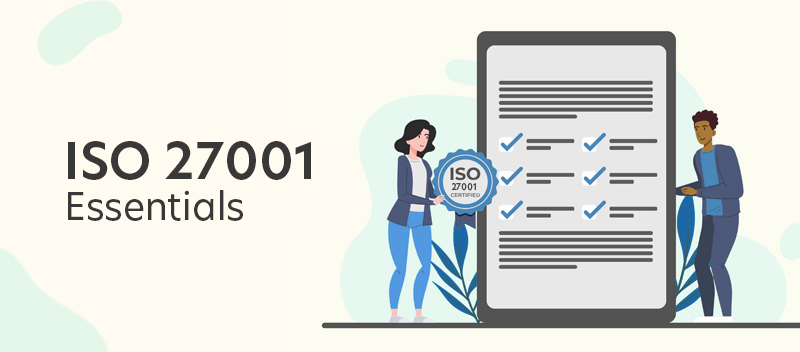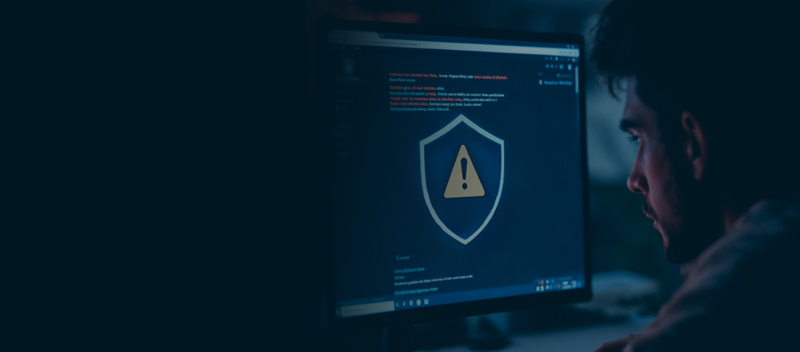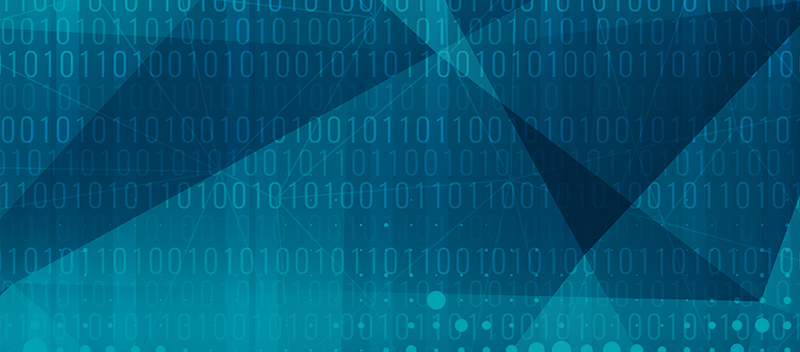Blog ISO 27001 Essentials – Creating a Secure Framework
ISO 27001 Essentials – Creating a Secure Framework

In this digital age, information security is essential for any firm. ISO 27001 provides a comprehensive framework for managing and protecting sensitive data. This international standard helps establish, implement, maintain, and improve the information security management system (ISMS) over time.
Organizations that use ISO 27001 to secure the confidentiality, integrity, and availability of their information assets may reduce the risk of data breaches and foster stakeholder confidence.
Understanding ISO 27001
ISO 27001 is an international standard dedicated to information security management. Its primary purpose is to help organizations of any size or type protect their information systematically and cost-effectively.
Key Components of the Standard
ISO 27001 is built on several key components, which can be broken down as follows:
-
- Risk Assessment: Identifying potential threats to your information and evaluating the risks associated with them.
-
- Security Controls: Implementing measures to mitigate identified risks. These controls are listed in Annex A of the standard and cover areas like access control, physical security, and incident management.
-
- Continuous Improvement: Regularly reviewing and updating your ISMS to adapt to new threats and changes in the organization.
Benefits of ISO 27001 Certification
Why should you consider getting certified? Here are some compelling reasons:
-
- Enhanced Security: By adhering to a structured framework, you significantly reduce the risk of data breaches and cyber-attacks.
-
- Compliance: Being ISO 27001 certified can help you meet legal and regulatory requirements, making audits less stressful.
-
- Competitive Advantage: Demonstrating a commitment to security can set you apart from competitors and build trust with customers and partners.
-
- Improved Processes: The certification process often highlights inefficiencies in current systems, leading to more streamlined operations.
In short, ISO 27001 certification is more than just a badge; it’s a testament to your organization’s dedication to protecting sensitive information in a structured and effective manner.
For more on our ISO 27001 compliance services, Click Here
The ISO 27001 Framework
Let’s dive into the ISO 27001 framework and understand how it all comes together to create a secure environment for your information systems.
Plan-Do-Check-Act (PDCA) Cycle
The backbone of ISO 27001 is the Plan-Do-Check-Act (PDCA) cycle.
- Plan: Identify your information security risks and plan how to address them. This involves setting objectives, defining policies, and establishing necessary procedures.
- Do: Implement the security controls and processes you’ve planned out. This is where the action happens.
- Check: Monitor and review your ISMS to ensure it’s working effectively. Conduct internal audits and measure performance against your objectives.
- Act: Based on what you’ve found in the “Check” phase, improve your ISMS to stay ahead of potential security threats.
Risk Assessment and Management
Risk assessment is a critical part of ISO 27001. Here’s how you can tackle it:
-
- Identify Risks: Determine what could go wrong with your information assets. This might include cyber-attacks, data breaches, or even physical theft.
-
- Analyze Risks: Evaluate the likelihood and impact of these risks. Not all risks are created equal; some might be more damaging than others.
-
- Treat Risks: Decide how to manage these risks. This could involve implementing specific controls, transferring the risk (e.g., through insurance), or accepting the risk if it’s low impact enough.
Information Security Policies and Procedures
Having a robust set of information security policies and procedures is akin to having a solid foundation for your ISMS. These documents guide your organization in maintaining consistent and effective security practices.
- Policies: High-level statements that define your organization’s stance on information security. These should align with your business objectives and regulatory requirements.
- Procedures: Detailed, step-by-step instructions on how to implement the policies. This includes everything from access control measures to incident response protocols.
Clear and comprehensive policies and procedures ensure that everyone in your organization knows their role in protecting information assets. This not only helps in compliance but also fosters a culture of security awareness.
Core Elements of ISO 27001
Let’s explore the core elements that make ISO 27001 a robust standard for information security management.
1. Leadership and Commitment
Leadership plays a crucial role in driving the success of ISO 27001. Implementing an effective ISMS is challenging without top management’s buy-in. When leaders are visibly committed to information security, it trickles down through the organization, encouraging everyone to take it seriously.
2. Planning and Risk Assessment
Effective planning is fundamental to a strong ISMS. Set clear, measurable information security objectives aligned with business goals. Identify and evaluate risks to determine where controls are needed.
3. Support and Resource Allocation
For your ISMS to work, it needs proper support and resources. Educate employees about information security policies and their roles. Provide necessary tools, technology, and workspace for implementing security controls. Maintain comprehensive records of policies, procedures, and audit logs.
4. Operation and Implementation
Apply the security measures outlined in your risk assessment. Follow defined processes for managing daily operations securely. Also, be prepared to respond swiftly to security incidents to minimize damage.
5. Performance Evaluation
Regularly evaluating your ISMS is critical for ensuring it remains effective. Track performance metrics and security incidents. Conduct periodic audits to assess compliance with ISO 27001 requirements.
6. Improvement and Continual Adaptation
The final core element is about never being satisfied with the status quo. Look for ways to enhance your ISMS based on audit results and feedback. Implement improvements to address weaknesses or emerging threats. Lastly, stay updated with new security trends and technologies to keep your ISMS relevant.
By fostering a culture of continual adaptation, your organization can stay ahead of potential security issues and maintain a robust defense.
Implementing ISO 27001
Here’s how you get started with ISO 27001 implementation:
Gap Analysis and Initial Assessment
Before diving into full-scale implementation, it’s essential to understand where you currently stand:
- Conduct a Gap Analysis: Compare your existing information security practices against ISO 27001 requirements. Identify areas where your current systems fall short.
- Initial Risk Assessment: Begin with a thorough risk assessment to lay the foundation for your ISMS. This involves:
- Identify Risks: Determine potential threats to your information assets.
- Evaluate Vulnerabilities: Assess weaknesses in your current systems that could be exploited by these threats.
- Analyze Impact: Evaluate the potential impact of these risks on your organization to prioritize which ones need immediate attention.
Developing an Implementation Roadmap
Next, you’ll need a clear roadmap to guide your implementation process:
- Set Objectives: Define clear, achievable goals for your ISMS based on the results of your gap analysis.
- Create a Timeline: Develop a realistic timeline with milestones to track your progress.
- Assign Responsibilities: Designate roles and responsibilities to ensure accountability throughout the implementation process.
Training and Awareness Programs
Your ISMS is only as strong as the people who implement and follow it. Therefore, training and awareness are crucial:
-
- Employee Training: Conduct regular training sessions to educate employees about the new policies and procedures.
-
- Awareness Campaign: Run awareness programs to keep information security top-of-mind for all staff members.
-
- Ongoing Support: Provide continuous support and resources to help employees stay informed about the latest security practices.
ISO 27001 Certification Process
An authorized certification authority must perform a formal audit in order to certify an ISO 27001 system. Below is a summary of what to anticipate:
-
- Stage 1: Documentation Review: The auditor reviews your ISMS documentation to ensure it complies with ISO 27001 standards. This initial review focuses on scope, policies, risk assessments, and more.
-
- Stage 2: Main Audit: The auditor visits your organization to verify that the documented ISMS is effectively implemented. They will check if your security controls are operational and aligned with the standard.
-
- Non-Conformities: If any non-conformities are found, you’ll be required to address them within a specified time frame. Once resolved, the auditor will conduct a follow-up review.
-
- Certification Decision: If you meet all requirements, the certification body will issue an ISO 27001 certificate, indicating your compliance with the standard.
This process fosters confidence among stakeholders and clients while confirming your business’s commitment to information security.
Challenges and Best Practices
Implementing ISO 27001 can be a complex journey, but understanding common hurdles and best practices can make the process smoother and more effective.
Common Implementation Hurdles
Every organization faces challenges when adopting ISO 27001. Here are some typical obstacles:
- Resource Constraints: Implementing ISO 27001 requires significant time, budget, and personnel, which can be challenging for organizations with limited resources.
- Employee Resistance: Change can be met with resistance, especially if employees are not adequately informed or involved in the process.
- Complex Documentation: Documenting policies and procedures to meet ISO 27001 requirements can be daunting and time-consuming.
- Maintaining Consistency: Ensuring consistent application of security controls across different departments or locations can be difficult.
Recognizing these challenges upfront allows you to plan effectively and develop strategies to overcome them.
Tips for Successful ISO 27001 Adoption
To increase your chances of successful ISO 27001 implementation, consider these best practices:
-
- Gain Leadership Buy-In: Ensure top management is committed to the project by highlighting the benefits of ISO 27001 certification.
-
- Engage Employees: Involve employees early in the process through training and awareness programs to reduce resistance.
-
- Simplify Documentation: Use templates and tools to streamline the documentation process, making it more manageable.
-
- Regular Audits and Reviews: Conduct regular internal audits and management reviews to identify areas for improvement and ensure continuous compliance.
By following these tips, you can create a more seamless and efficient implementation process.
Integrating ISO 27001 with Other Security Frameworks
ISO 27001 doesn’t exist in isolation. It can be integrated with other standards and frameworks to enhance your overall information security posture:
- The ISO 27000 Series of Standards
ISO 27001 is part of the broader ISO 27000 series, which provides a comprehensive suite of standards for managing information security. These standards are designed to work together, offering a holistic approach to protecting your information assets. For instance, integrating ISO 27001 with:
- ISO 27002: Provides detailed guidance on the implementation of security controls.
- ISO 27003: Offers guidelines for the initial ISMS implementation.
- ISO 27005 for Risk Management
When it comes to risk management, ISO 27005 is an ideal companion to ISO 27001. While ISO 27001 outlines the requirements for an ISMS, ISO 27005 provides comprehensive guidelines for conducting thorough risk assessments and managing identified risks effectively. Incorporating ISO 27005 enhances your organization’s ability to identify, evaluate, and mitigate risks proactively.
- Supplementary Standards for Specific Industries or Requirements
Different industries often have unique information security needs, addressed by supplementary standards. For example:
- ISO 27799: Focuses on information security management in healthcare.
- ISO 27017: Provides guidelines for information security controls applicable to cloud services.
By integrating these supplementary standards, you can tailor your ISMS to meet specific industry requirements and enhance overall effectiveness.
The Future of ISO 27001
ISO 27001 offers a comprehensive framework for managing information security, with a focus on continuous improvement, policy documentation, risk assessment, and other essential components. By following its structured approach, organizations can systematically protect their information assets.
Driven by emerging threats and technological advancements, the cybersecurity landscape is continuously changing, to stay relevant, ISO 27001 is expected to undergo updates and revisions that address these evolving risks.
So, staying abreast of these changes ensures that your ISMS remains effective and up-to-date. For expert guidance and support in adopting ISO 27001, consider partnering with TrustNet. Our experienced team of experts can help you navigate the complexities of ISO 27001 compliance, ensuring a seamless and effective process.
Ready to enhance your information security?
Contact TrustNet today to get started with ISO 27001.




